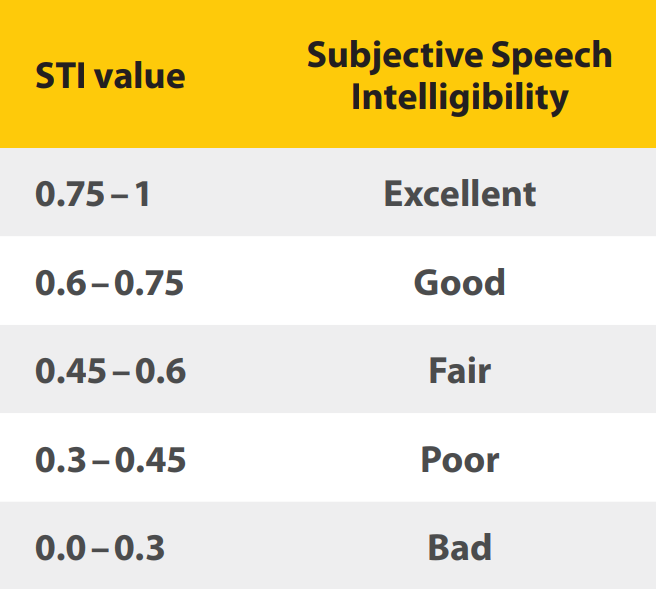Nowadays it is hard to imagine a train station without a PA system. Providing that the announcements are audible and clear, a PA system remains the most effective means of communicating information such as train timetables, changes to platforms, delays or updates to your journey.
Nowadays it is hard to imagine a train station without a PA system. Providing that the announcements are audible and clear, a PA system remains the most effective means of communicating information such as train timetables, changes to platforms, delays or updates to your journey. It is not easy to design a system that meets all these criteria, as it needs to be equipped with up-to-date components such as sound equalizers, delay lines, sound sensors, audio limiters and acoustic feedback eliminators.
Ensuring adequate volume and clarity for public announcements is key for an effective PA system. Audibility of information depends on the actual volume of the announcement as well as the distance from surrounding noise. In areas with consistent noise levels, the required sound level of public announcements can be ensured by the use of appropriate loudspeakers of adequate strength and highly effective amplifiers. It is recommended that the sound level of announcements should not be lower than 70 dB, and at least 10 dB higher than the level of surrounding noise in that area.
However, such an approach will not be sufficient in areas where surrounding noise levels vary significantly. For instance, trains approaching the platform generate considerable noise. On open platforms the noise may reach 80-85 dB. On enclosed ones it may exceed 90 dB. Such noise will easily drown out public address announcements with their volume set to average conditions on the platform.
On the other hand, setting the system volume permanently high so as to ensure announcements can be heard on the platform during train arrivals could be problematic. Such sound levels will be too high during nonarrival of trains. This is likely to cause discomfort to passengers, penetrate other zones (e.g. other platforms) and significantly increase noise emissions in the case of open spaces. By using properly calibrated background noise sensors, Ambient System provides the answer to this problem. The sensor readings allow the volume of announcements to be regulated in real time. Ambient’s systems have the built-in ability to adjust the volume levels of public announcements within 20 dB range.
The other critical issue is the speech intelligibility of public announcements. Ensuring the high quality of messages remains an on-going quest for many designers of PA systems. The added difficulty is the definition of speech intelligibility itself, as it is based on rather a subjective judgment. Over the years, speech intelligibility has been the subject of numerous studies aiming to formulate the objective definition of this parameter. Presently, Speech Transmission Index (STI) is commonly used to measure the quality of speech transmission, with values varying from 0 (bad) to 1 (excellent). The table below shows STI values and corresponding subjective speech intelligibility. It is recommended that STI value should not be lower than 0.5.

In practice, achieving good speech intelligibility is difficult as it depends on several factors, such as the size of a given area, acoustic conditions, quality of loudspeakers, options to correct frequencies and application of delay lines.
With regard to scale and applied materials (in particular those enabling noise reverberation), modern architecture poses a real challenge to designers of PA systems. The reverberation within a large train station can last 5–6 seconds. Ensuring good speech intelligibility in such difficult conditions is possible through the application of highly directional loudspeakers with minimal sound distortion, and support units such as digital frequency correction based on DSP processors.
Ambient’s product list includes a number of speakers ideally suited to meet the requirements of such a demanding environment. These include Sound Projectors type MCR-SMSP20 and Line-Array Loudspeaker Columns type ABT-LA30 and ABT-LA60. The correction function allows users to adjust the system to acoustic conditions. MULTIVES and miniVES systems offer DSP with three-band parametric EQ on all inputs on Control Units and eight-band parametric EQ on each of the audio output.
Another useful function is the ability to set up delays on loudspeaker lines in order to eliminate audible noise reverberation in vast areas. Audible reverberations always have a negative impact on sound quality, and therefore Ambient offers advanced PA systems that allow for the setting up of delays on loudspeakers lines for up to 30 seconds. Ambient’s product list includes two systems configured for network connectivity.
MULTIVES has been designed to offer exceptional versatility and configurability. It is therefore equally suitable for medium-range buildings as well as complex commercial structures such as train stations, airports, refineries, sport stadiums etc. Its open architecture is based on proven fibre-optic Ethernet connectivity between control units and other elements of the system, thus enabling digital transmission of voice messages, public address functions and music. The MULTIVES system comprises Control Units ABT-CU11 or ABT–CU8 (with control and extension slots), multichannel amplifiers, fireman and zone microphones and 20-key extension keyboards. The system enables digital scaling of communications with other integrated safety systems.
miniVES is a standalone compact version of MULTIVES. Based on the same proven technology, it is a plug-and-play device with all elements you would expect from a voice evacuation system. It supports up to eight individual broadcasting zones, making it an ideal solution for smaller structures.
It can significantly reduce design, configuration and installation time, as well as costs. The system’s easy installation is an added bonus -- miniVES comes prepackaged in a box ready to be directly installed on the wall.
To find out more about Ambient System's transport solutions click here.